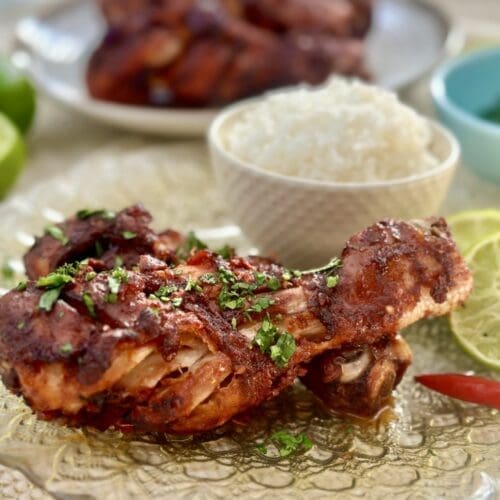
Thai Red Curry Roast Chicken Drumsticks
You won't believe how delicious these Thai Red Curry Roast Chicken Drumsticks are. A simple marinade using store-bought red curry paste!
Video
Ingredients
- 1.5kg / 3.3lb or 8 chicken drumsticks (NOTE 1)
- 6 (30g / 1oz) garlic cloves, peeled and minced
- 30gm / 1oz ginger, peeled and minced
- ¼ cup (60ml / 2floz) fresh lime juice
- ¼ cup (65gm / 2.3oz) Thai red curry paste (NOTE 2)
- 2 tbsp (35gm / 1.2oz) brown sugar, packed
- ⅓ cup (80ml / 2.7floz) light soy sauce (NOTE 3)
- 2 tbsp (40ml / 1.4floz) peanut or vegetable oil
- 1 tsp salt
- 2 tbsp finely chopped coriander / cilantro
Instructions
- Take a sharp knife and slash the drumsticks on both sides, making 2 or 3 cuts down to the bone.
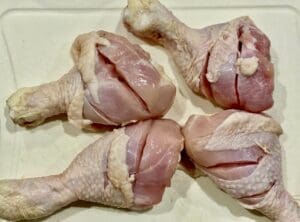
- Place the drumsticks in a large bowl along with the remaining ingredients except for the coriander. Using gloves, massage the ingredients well into the chicken. Cover the bowl and let the chicken marinate in the fridge for at least 2 hours or overnight.
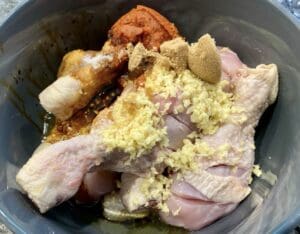
- Remove chicken from the fridge and rest at room temperature for 30 minutes. When resting time is down to 15 minutes, preheat the oven to 180°C (360°F) for fan-forced ovens.Place baking/parchment paper in a roasting tray, followed by foil for easy cleanup. Place the drumsticks on a raised grill rack, then brush half of the marinade over the chicken.
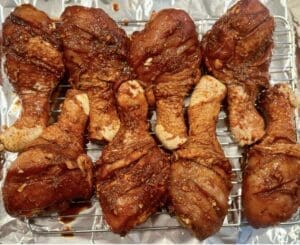
- Roast for 20 minutes, then turn the drumsticks over, brush on the remaining marinade and roast for another 15 to 20 minutes or until cooked through. Optional - For a nice colouring on the drumsticks, grill or broil on high for 5 minutes. Sprinkle coriander over the chicken and serve!
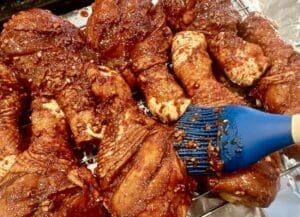
Notes
(NOTE 1) Chicken - I used drumsticks with the skin on, but skinless would also work. Chicken thighs with or without bone will also work nicely, but adjust the roasting time.
(NOTE 2) Thai red curry paste - 'Maesri' red curry paste from Thailand is my top choice because it's affordable and the nearest thing to homemade red curry. However, any good quality red curry paste would work too.
(NOTE 3) Light soy sauce is a savoury condiment commonly used in Asian cuisine. It has a rich, umami flavour and is often used as a seasoning or dipping sauce. Opt for light or regular soy sauce, as dark or sweet soy sauces aren't interchangeable.
Leftovers - Allow the Thai Red Curry Roast Chicken Drumsticks to cool completely at room temperature, then transfer them into a sealed container and store them in the fridge for up to 3 days. When frozen, they'll keep for 2 to 3 months.
I've used a third-party application to calculate the calories and nutritional information, so please use this as an approximate guide only.
Cooking measurements are in Australian standard spoon and cup measurements. For specific details and conversions, visit our Australian Cooking Measurements page
Nutrition
Serving: 1 DrumstickCalories: 245kcalCarbohydrates: 8gProtein: 24gFat: 17gSaturated Fat: 4gPolyunsaturated Fat: 4gMonounsaturated Fat: 7gTrans Fat: 0.1gCholesterol: 116mgSodium: 972mgPotassium: 347mgFiber: 1gSugar: 5gVitamin A: 1348IUVitamin C: 4mgCalcium: 38mgIron: 1mg